Image Aesthetics
Gabriele Peters
Selected Publications:
- Gabriele Peters, Criteria for the Creation of Aesthetic Images for Human-Computer Interfaces - A Survey for Computer Scientists, International Journal of Creative Interfaces and Computer Graphics, Vol. 2 (1), pp. 68-98, 2011.
- Gabriele Peters, Aesthetic Primitives of Images for Visualization, 11th International Conference on Information Visualisation (iV 2007), Symposium on Design and Aesthetics in Visualisation (DAViz 2007), IEEE Computer Society, pp. 316-325, Zurich, Switzerland, July 2-6, 2007.
All publications are available from Publications.

Summary
Interaction in human-computer interfaces is most intuitively initiated in an image-based way. Often images are the key components of an interface. However, too frequently interfaces are still designed by computer scientists with no explicit education in the aesthetic design of interfaces and especially of images. We developed a well-defined system of criteria for the aesthetic design of images, motivated by principles of visual information processing by the human brain and by considerations of the visual arts. It serves as a guideline for interface designers by giving them a collection of criteria at hand, how to deal with images in terms of aesthetics for the purpose of developing better user interfaces. Furthermore we exemplified the proposed criteria by an analysis of the images of the web interfaces of well known museums.
The human visual system is functionally specialized with independent modules working in parallel. Signals carrying information on color, motion, form, and depth are collected in different compartments of the primary visual cortex. From here the information is carried on to areas specialized only on color, motion, etc., respectively. These modularities (or dimensions) of our visual system are also attributes important for the formal aspects of visual arts, and thus for aesthetics. Hypotheses say:
- Different attributes of the visual arts excite different modules of the human visual system, thus there is also a functional specialization in aesthetics.
- A property of a stimulus is intrinsically interesting if it resonates with mechanisms of the visual system.
- Aesthetic primitives isolate or exaggerate one of the processes of the human visual system by evoking maximal responses of those cells in the brain dedicated to that special dimension. They are aesthetically moving, because they blend with our brains.
We concentrate on six dimensions of visual aesthetics (color, form, spatial organization, motion, depth, and the human body) and give examples for their primitives that evoke an aesthetic experience.
Color

Use a few strong colors only:
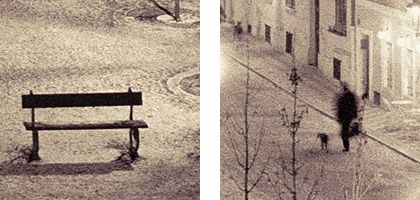
Monochromaticity often evokes an aesthetic appeal:
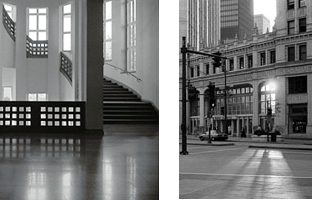
Exploit the dynamic range:
Form
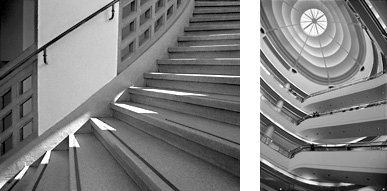
Forms should be clear and simple:

Silhouttes of humans and others objects are aesthetic:
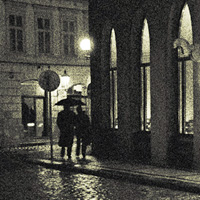
Spatial Organization
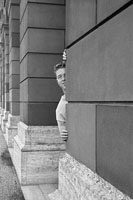
Spatial organization of image elements should be clear and simple:
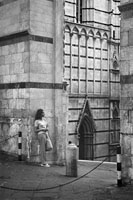
Apply the rule of the golden mean:

Attain a wholistic impression by textures and patterns:
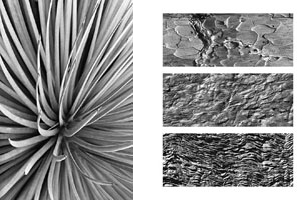

Apply variations to patterns and take care for the visual rhythm induced by repetition of elements:

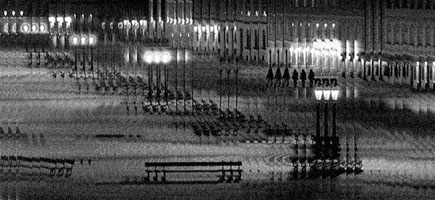
Motion

Express motion by blur of high contrast (motion blur and panning blur):

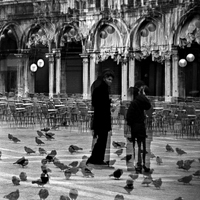
Distinct motion phases are aesthetically appealing:
Depth

Illustrate linear perspective:
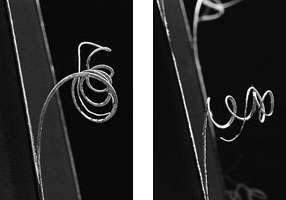
The distribution of light and shadow may evoke the impression of depth:
Human Body

Let the principal axes of the human body clearly be visible:
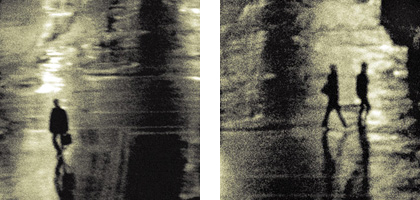
- Downloads:
- Research Report 2010-2013 (pdf)
- Forschungsbericht 2010-2013 (pdf)
- Lehrbericht 2010-2022 (pdf)
- Legal notice
- © FernUniversität in Hagen
 FernUniversität in Hagen, Faculty of Mathematics und Computer Science, Human-Computer Interaction, 58084 Hagen
FernUniversität in Hagen, Faculty of Mathematics und Computer Science, Human-Computer Interaction, 58084 Hagen

